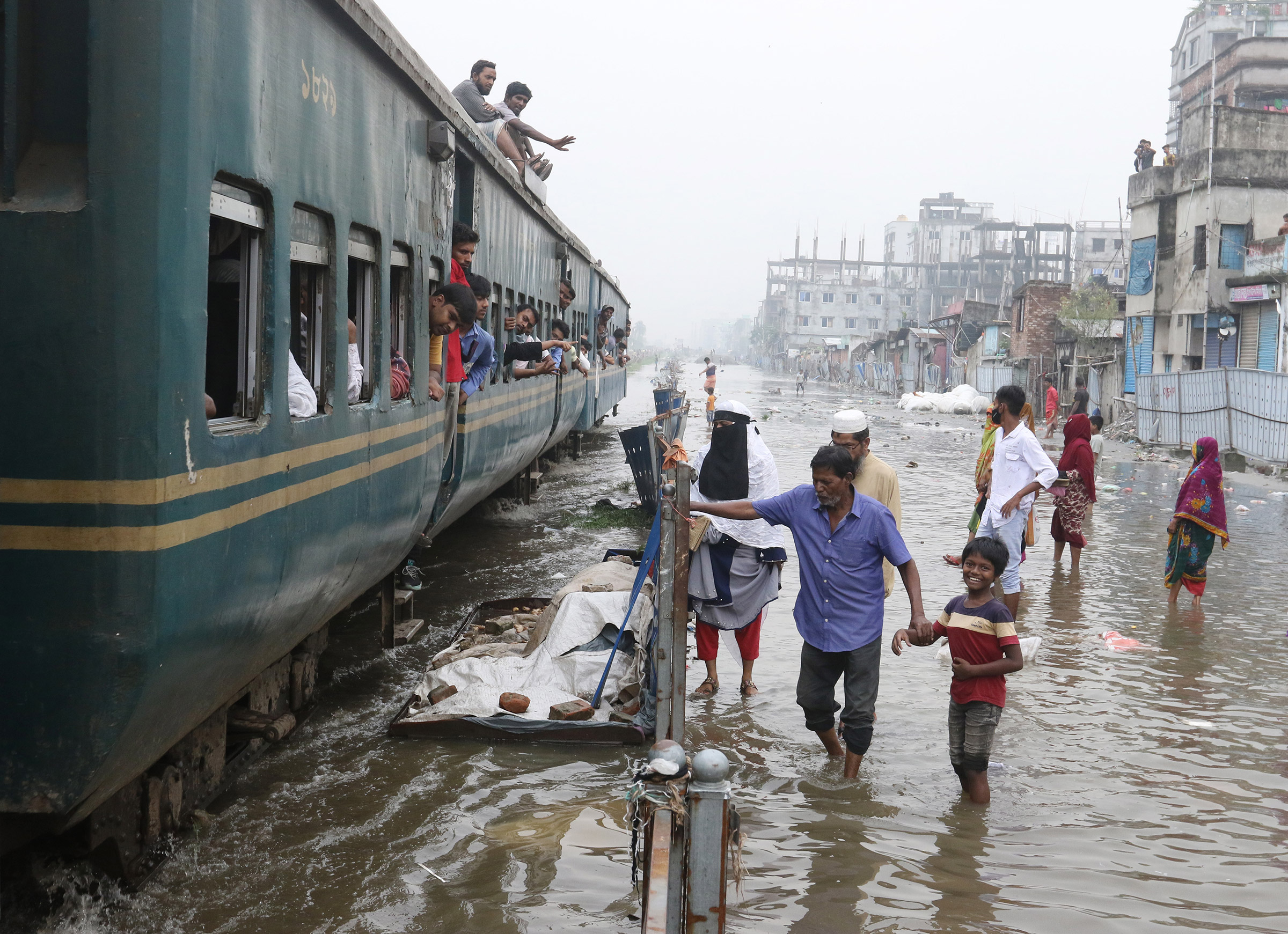
Dhaka, the capital of Bangladesh, is almost entirely surrounded by the waters of the Ganges River delta. Highly vulnerable to rising sea levels, Dhaka also faces threats from above: monsoon rains regularly overwhelm drainage systems and flood streets. Paradoxically, Dhaka also lacks clean water; as the population of 24 million sucks wells dry, seawater rushes in to take its place.

Most urban planners would despair at the prospect of making Dhaka climate-resilient. Not Rafiq Azam, a Bangladeshi architect who leads a team redesigning the historic southern half of the city to adapt to a warmer, wetter future. “If the challenge becomes a problem, it’s misery,” says Azam. “But if you think of a challenge as an opportunity for innovation, it turns into a celebration.” Azam began by revitalizing the city’s neglected urban parks, turning them into small green oases that double as water-catchment areas: deep trenches below collect and store rainwater runoff from the parks, which is then filtered and pumped to a community tap as drinking water. The existing drainage ditches take undrinkable runoff from city streets, reducing flooding. So far his team has transformed 31 community parks and playgrounds. “Rain is no longer a pain in these areas,” he says. “It’s reason for celebration.”
Storm surges threaten low-lying cities globally; if Dhaka’s experience is a cautionary tale of the challenges of climate change, its solutions could be equally applied elsewhere.
Read More of TIME’s COP26 Coverage: Meet the People Working to Accomplish the COP26 Agenda
More Must-Reads from TIME
- Cybersecurity Experts Are Sounding the Alarm on DOGE
- Meet the 2025 Women of the Year
- The Harsh Truth About Disability Inclusion
- Why Do More Young Adults Have Cancer?
- Colman Domingo Leads With Radical Love
- How to Get Better at Doing Things Alone
- Michelle Zauner Stares Down the Darkness
Contact us at letters@time.com